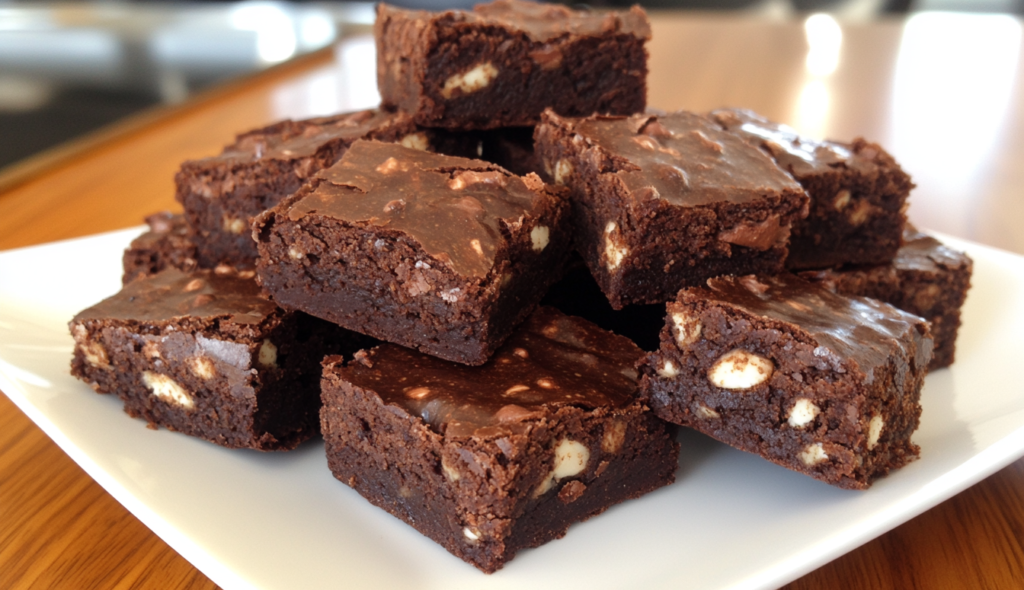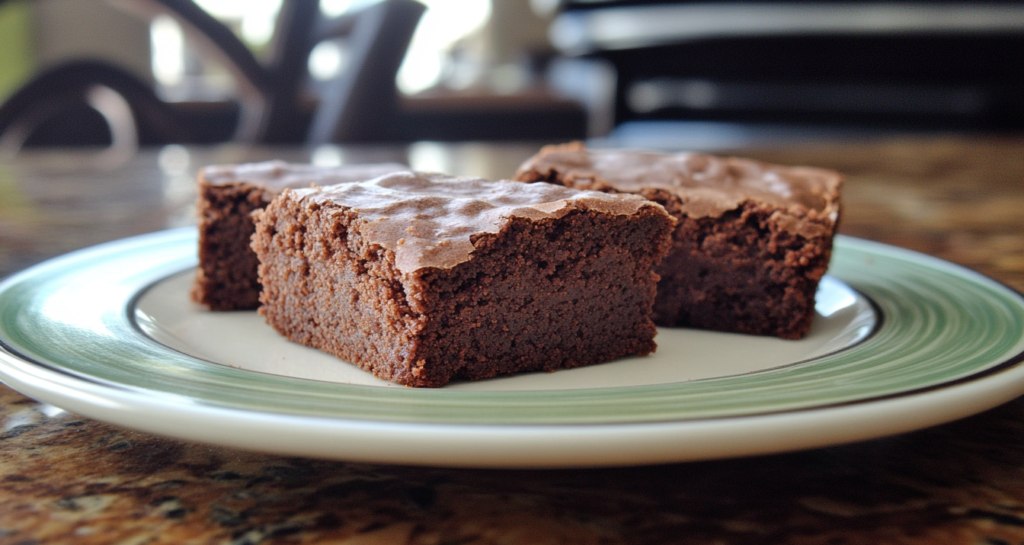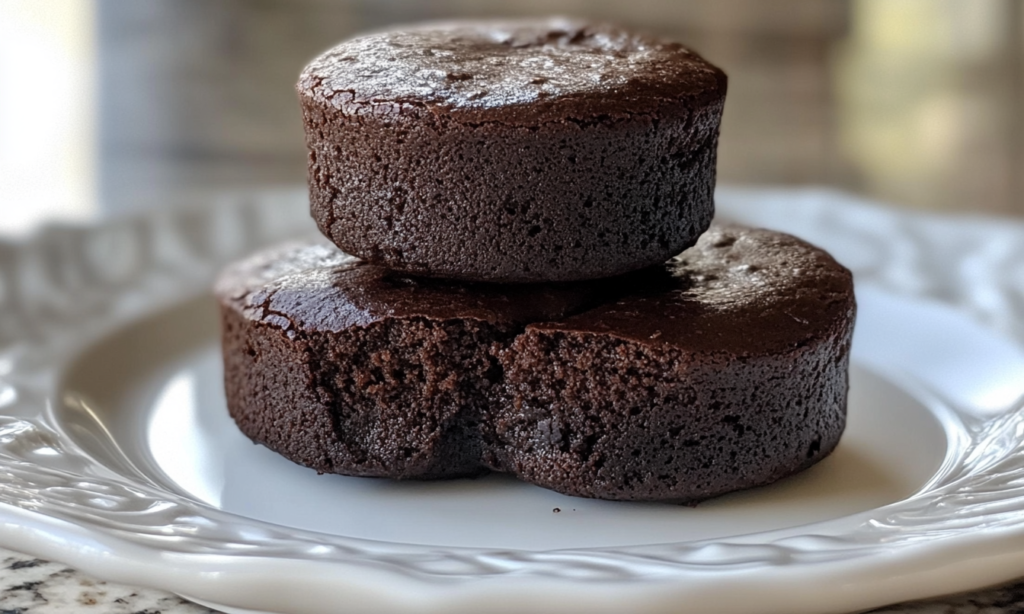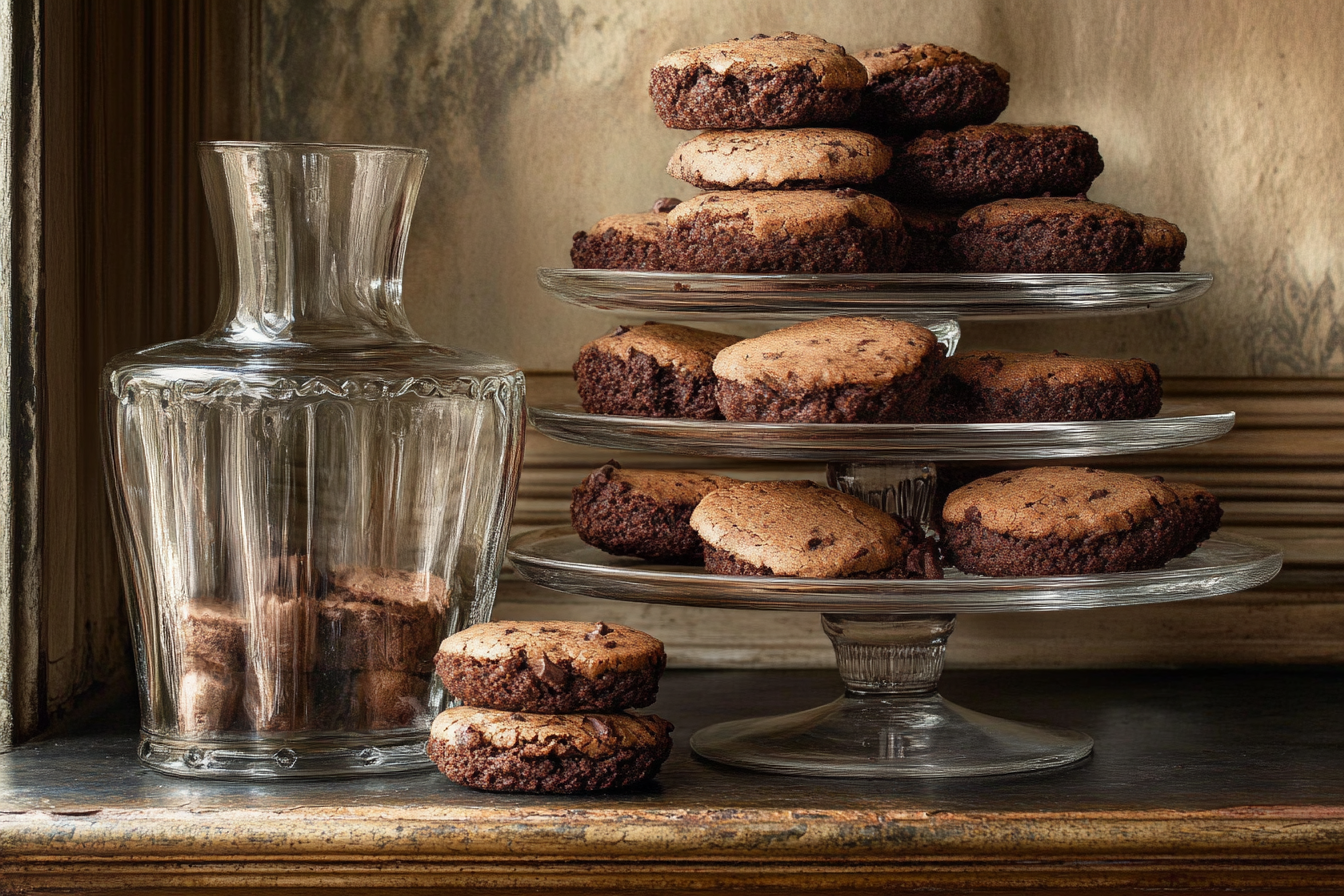Introduction to Sugar-Free Brownies
What to use in brownies instead of sugar is a common question for those looking to enjoy a delicious treat without the guilt of added sweeteners. Sugar-free brownies can still be rich, fudgy, and satisfying when made with the right substitutes. Whether you’re reducing sugar for health reasons or experimenting with natural alternatives, there are plenty of options to keep your brownies sweet and indulgent without traditional sugar.
Why Reduce or Eliminate Sugar in Brownies?
Many people reduce sugar for health reasons, including managing diabetes, reducing calorie intake, or avoiding sugar crashes. High-sugar diets are linked to a range of issues like weight gain, heart disease, and inflammation. By using sugar alternatives, you can enjoy the indulgence of brownies without compromising your health goals.
Health Benefits of Alternative Sweeteners
Replacing refined sugar with natural sweeteners or low-calorie options can:
- Lower the glycemic index of your brownies.
- Add nutritional benefits, such as vitamins and minerals.
- Reduce calorie content, making your treats more diet-friendly.
- Support long-term health goals by avoiding refined sugars.
However, making the switch requires understanding how these alternatives work in baking to maintain taste and texture.
Common Challenges When Baking Without Sugar
Baking without sugar comes with its own set of challenges. Sugar does more than sweeten; it provides moisture, browning, and structure. Without it, brownies can:
- Become too dry or crumbly.
- Lose their rich, caramelized flavor.
- Lack the shiny, crackly crust that many love.
To overcome these issues, selecting the right sugar substitute and adjusting your recipe are key.

Natural Sweeteners for Brownies
Honey: Pros and Cons in Baking
Honey is a popular natural sweetener known for its rich flavor and versatility. Here’s how it stacks up:
- Pros:
- Adds a deep, complex sweetness.
- Retains moisture, keeping brownies soft and chewy.
- Contains trace vitamins, minerals, and antioxidants.
- Cons:
- It’s sweeter than sugar, so use about 3/4 cup of honey for every 1 cup of sugar.
- Adds a distinct flavor that might overpower chocolate.
- Can make the batter too liquidy, requiring adjustments in flour or eggs.
Maple Syrup: How to Use It in Recipes
Maple syrup offers a milder sweetness compared to honey and pairs beautifully with chocolate.
- Use a 1:1 ratio to replace sugar.
- Its liquid nature may require reducing other liquids in the recipe.
- Opt for pure maple syrup rather than pancake syrups, which often contain corn syrup and additives.
Coconut Sugar: A Healthier Granulated Alternative
Coconut sugar is a granulated option that closely resembles traditional sugar in texture and taste.
- It has a lower glycemic index, making it a healthier choice.
- Its caramel-like flavor enhances the richness of brownies.
- Substitute it at a 1:1 ratio, but note that it may not dissolve as seamlessly as refined sugar.
Low-Calorie and Artificial Sweeteners
Stevia: How It Works in Brownies
Stevia is a plant-based sweetener that’s hundreds of times sweeter than sugar.
- Pros:
- Zero calories.
- Suitable for diabetics as it doesn’t raise blood sugar levels.
- Requires only a small amount due to its potency.
- Cons:
- Can leave a bitter aftertaste if overused.
- Doesn’t provide the same texture as sugar, requiring additional binding agents.
To offset its intensity, consider blending stevia with another sweetener.
Monk Fruit Sweetener: Taste and Texture Considerations
Monk fruit sweetener is another natural, low-calorie option with a neutral sweetness.
- Benefits:
- No aftertaste, unlike some artificial sweeteners.
- Works well in combination with other alternatives.
- Challenges:
- Can be pricier and harder to find.
- May not brown like sugar, affecting the appearance of your brownies.
Erythritol: Ideal Ratios for Substitution
Erythritol, a sugar alcohol, is a popular choice for those seeking a granulated sweetener with fewer calories.
- Substitute it at a 1:1 ratio for sugar.
- It caramelizes slightly, aiding in texture and browning.
- Its cooling aftertaste may be noticeable, so mix it with another sweetener to balance flavors.
Fruit-Based Alternatives
Using Mashed Bananas for Sweetness
Mashed bananas are a wholesome and flavorful sugar substitute.
- Add natural sweetness and moisture.
- Work best in fudgier brownie recipes.
- Substitute 1 cup of mashed bananas for 1 cup of sugar but reduce other liquids slightly.
Dates and Date Syrup: A Natural, Rich Sweetener
Dates and their syrup offer unparalleled natural sweetness.
- Dates: Blend into a paste and use 1 cup for every cup of sugar.
- Date Syrup: Use at a 1:1 ratio for a caramel-like sweetness.
- Enhance the flavor with a pinch of salt or espresso powder to complement the richness of chocolate.
Applesauce: Adding Sweetness and Moisture
Unsweetened applesauce is a versatile sugar substitute that also reduces fat in recipes.
- Substitute 1 cup of sugar with 3/4 cup of applesauce.
- Add a little extra cocoa powder to maintain the brownie’s chocolatey intensity.
- Best used in recipes where moisture is essential.

What to Use in Brownies Instead of Sugar (Part 2)
Flavor Enhancers to Compensate for Sugar
When replacing sugar, it’s essential to focus on flavor depth to ensure your brownies are as indulgent as the traditional version.
Adding Vanilla Extract for Depth of Flavor
Vanilla extract is a simple yet powerful tool for enhancing flavor.
- Why it works: Vanilla complements chocolate and brings out its natural sweetness.
- How to use it: Add 1 to 2 teaspoons of pure vanilla extract to your batter, even if your recipe doesn’t call for it.
- Pairing tip: Combine vanilla with a dash of espresso powder or brewed coffee for a more pronounced flavor.
Incorporating Spices Like Cinnamon and Nutmeg
Spices can add complexity and warmth to your brownies.
- Cinnamon: Adds a subtle sweetness and works exceptionally well with chocolate.
- Nutmeg: Offers a slightly nutty, aromatic quality that deepens the flavor profile.
- Use 1/4 to 1/2 teaspoon of these spices for a noticeable but not overpowering enhancement.
Using Unsweetened Cocoa Powder for a Rich Taste
Cocoa powder is naturally bitter but enhances the chocolate flavor of brownies when used correctly.
- Opt for Dutch-processed cocoa for a smoother, less acidic taste.
- Increase the amount of cocoa powder slightly when removing sugar to intensify the chocolate flavor.
- Balance the bitterness with a natural sweetener like honey or dates.
Balancing the Texture in Sugar-Free Brownies
Removing sugar can sometimes affect the structure and moisture balance of your brownies. Addressing texture issues is key to achieving a perfect bite.
Adjusting Fat Content for Moisture
Fat compensates for the lost moisture and tenderness that sugar provides.
- Increase butter, coconut oil, or plant-based oils by 10–15% if your batter feels dry.
- Consider adding an extra tablespoon of melted chocolate for additional richness.
Incorporating Greek Yogurt or Avocado for Creaminess
Both Greek yogurt and avocado are excellent substitutes for fats and moisture.
- Greek yogurt: Adds tanginess and keeps brownies moist. Substitute 1/4 cup of yogurt for every 1/4 cup of butter.
- Avocado: Offers creaminess without overpowering the flavor. Blend it well to avoid lumps, and substitute 1:1 for butter.
Experimenting with Eggs and Binders
Eggs play a critical role in binding and providing structure. If your recipe lacks sugar, you may need additional binding agents.
- Add an extra egg or egg yolk to create a chewier texture.
- For vegan options, flaxseed meal or chia seeds mixed with water can serve as a binder.
Combining Sweeteners for Best Results
Sometimes, the best way to replicate sugar’s effects is by combining multiple sweeteners.
Mixing Natural and Artificial Sweeteners
Using a blend of sweeteners can mimic sugar’s complexity and prevent overpowering flavors.
- Combine a low-calorie sweetener like stevia or erythritol with a natural sweetener like honey.
- Example ratio: 50% natural sweetener + 50% artificial sweetener for balanced sweetness and texture.
The Importance of Taste Testing
Taste your batter before baking to ensure the sweetness is just right.
- Be cautious with artificial sweeteners; they can taste overly sweet or bitter in large quantities.
- Remember, flavors mellow after baking, so don’t hesitate to add a little extra sweetness if needed.
Avoiding Overpowering Sweetness
While you want your brownies to taste sweet, overdoing it can ruin the balance.
- Use less potent sweeteners like monk fruit or coconut sugar to maintain subtlety.
- Pair sweetness with flavors like vanilla, cinnamon, or espresso to enhance the overall experience without overloading the palate.
Tips for Baking Brownies Without Sugar
Even with the right ingredients, the baking process itself can influence the success of your sugar-free brownies.
Adjusting Baking Times and Temperatures
Sugar-free brownies often need slight adjustments to avoid overcooking.
- Lower the oven temperature by 10–15°F (5–7°C) to prevent excessive browning.
- Check for doneness 5 minutes earlier than the recipe suggests.
Monitoring Batter Consistency
The absence of sugar can make batters less viscous, so pay attention to the texture.
- If the batter seems too runny, add a tablespoon of flour or cocoa powder.
- For overly thick batters, thin with milk or a liquid sweetener like honey or maple syrup.
Using High-Quality Ingredients to Enhance Flavor
Without sugar, the quality of other ingredients becomes even more critical.
- Invest in high-quality cocoa powder and chocolate.
- Use fresh, ripe fruits like bananas or dates for natural sweetness.
- Opt for pure extracts and oils for added depth.
Common Mistakes and How to Avoid Them
Overcompensating with Sweeteners
It’s tempting to use excessive amounts of sugar substitutes, but this can lead to overly sweet or off-tasting brownies.
- Follow substitution ratios carefully, and remember that less is often more when using potent sweeteners like stevia.
Ignoring the Role of Acid in Baking
Sugar interacts with acidic ingredients like cocoa powder and baking soda, so balance is essential.
- Add a teaspoon of lemon juice or vinegar to activate leavening agents and improve texture.
Overmixing the Batter
Overmixing can lead to dense, tough brownies, especially when sugar is absent.
- Mix until just combined, and fold in dry ingredients gently to retain airiness.
What to Use in Brownies Instead of Sugar (Part 3)

Tips for Baking Brownies Without Sugar
Baking sugar-free brownies successfully is about balancing flavors, textures, and baking techniques. Mastering these adjustments ensures your brownies turn out indulgent and satisfying.
Adjusting Baking Times and Temperatures
Sugar helps baked goods brown evenly and retain moisture, so eliminating it requires some fine-tuning.
- Reduce oven temperature by 10–15°F (5–7°C) to prevent over-browning or drying out.
- Check the brownies 5–10 minutes before the suggested baking time to avoid overcooking, as sugar substitutes can cause brownies to cook faster.
For a fudgy texture, slightly underbake your brownies and let them finish setting as they cool.
Monitoring Batter Consistency
Without sugar, batters may feel thinner or less cohesive. Achieving the right balance is essential for the ideal texture.
- Too runny? Add a tablespoon of cocoa powder, almond flour, or cornstarch.
- Too thick? Thin it with a small amount of milk, almond milk, or a liquid sweetener like maple syrup.
Ensure the batter spreads evenly in the pan to avoid uneven cooking.
Using High-Quality Ingredients to Enhance Flavor
Since sugar plays a role in enhancing and masking flavors, its absence makes the quality of ingredients more critical.
- Opt for premium cocoa powder and chocolate chips for a rich flavor.
- Use pure vanilla extract instead of imitation for a deeper aroma.
- Fresh ingredients like ripe bananas or high-grade honey can elevate the taste of sugar-free brownies.
Common Mistakes and How to Avoid Them
Overcompensating with Sweeteners
It’s easy to overdo sugar substitutes, especially if you’re unfamiliar with their potency.
- Avoid using too much stevia, monk fruit, or erythritol, as they can create an overpowering sweetness or unpleasant aftertaste.
- Combine sweeteners (e.g., stevia with honey or dates) to balance intensity and flavor.
Ignoring the Role of Acidity in Baking
Sugar naturally balances acidic components in recipes. Without it, brownies may taste off or fail to rise properly.
- Incorporate a teaspoon of lemon juice, yogurt, or vinegar to balance acidity and activate leavening agents.
Overmixing the Batter
Without sugar’s stabilizing properties, overmixing can make the batter tough and dense.
- Mix until ingredients are just combined to maintain lightness and a tender crumb.
FAQs About Sugar-Free Brownie Baking
- Can You Substitute All Sugar in Any Recipe? Yes, but it requires adjustments to texture and sweetness. Experiment with a mix of sweeteners and flavor enhancers for the best results.
- What Is the Best Sweetener for Diabetics? Stevia, monk fruit, and erythritol are excellent options as they don’t spike blood sugar levels.
- How to Achieve the Right Level of Sweetness Without Sugar? Use a combination of natural and artificial sweeteners, and always taste-test the batter.
- Can You Use Fruit Purees in Every Recipe? Yes, but they work best in recipes that allow for added moisture, such as fudgy brownies.
- Why Do Sugar-Free Brownies Sometimes Turn Out Bitter? Some sugar substitutes, like stevia or cocoa powder, can be bitter. Balance them with vanilla, spices, or a pinch of salt.
- What’s the Best Sugar Substitute for Baking? Coconut sugar, maple syrup, and erythritol are popular for their versatility and mild sweetness.
- How Do You Prevent Sugar-Free Brownies from Becoming Dry? Adjust fat content with butter, oil, or avocado, and monitor baking time closely.
- Can I Substitute Liquid Sweeteners for Granulated Sugar? Yes, but reduce other liquids in the recipe to maintain the right consistency.
- How Do You Get a Crackly Top on Sugar-Free Brownies? Whip the eggs and sweeteners vigorously to incorporate air, then fold in dry ingredients gently.
- Are Sugar-Free Brownies Healthier? They can be, especially if you use natural sweeteners or low-calorie alternatives, but moderation is still key.
Conclusion
The Future of Healthy Baking
The shift toward sugar-free baking reflects a growing desire for healthier lifestyles without sacrificing indulgence. By using sugar substitutes, creative ingredients, and smart techniques, you can create brownies that are just as satisfying as their traditional counterparts.
Encouraging Experimentation with Sugar Substitutes
Baking is as much an art as a science. Experiment with different combinations of sweeteners, fats, and flavor enhancers to find your perfect sugar-free brownie recipe. Over time, you’ll gain confidence in creating treats that align with your dietary goals without compromising on taste.
Related Article : Why does the US military have a 26 page brownie recipe?

